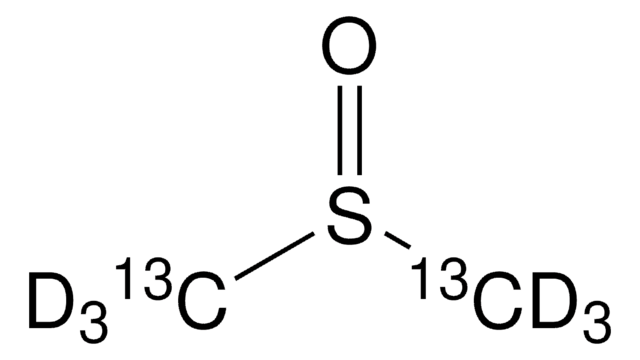156914
Dimethyl sulfoxide-d6
"100%", 99.96 atom % D
Synonym(s):
(Methyl sulfoxide)-d6, DMSO-d6, Hexadeuterodimethyl sulfoxide
About This Item
Recommended Products
vapor pressure
0.42 mmHg ( 20 °C)
Quality Level
isotopic purity
99.96 atom % D
Assay
≥99% (CP)
form
liquid
autoignition temp.
573 °F
expl. lim.
42 %
technique(s)
NMR: suitable
impurities
≤0.0250% water
water
refractive index
n20/D 1.476 (lit.)
bp
189 °C (lit.)
mp
20.2 °C (lit.)
density
1.190 g/mL at 25 °C (lit.)
mass shift
M+6
SMILES string
[2H]C([2H])([2H])S(=O)C([2H])([2H])[2H]
InChI
1S/C2H6OS/c1-4(2)3/h1-2H3/i1D3,2D3
InChI key
IAZDPXIOMUYVGZ-WFGJKAKNSA-N
Looking for similar products? Visit Product Comparison Guide
General description
Application
Recommended products
accessory
Storage Class Code
10 - Combustible liquids
WGK
WGK 1
Flash Point(F)
190.4 °F
Flash Point(C)
88 °C
Choose from one of the most recent versions:
Already Own This Product?
Find documentation for the products that you have recently purchased in the Document Library.
Customers Also Viewed
Our team of scientists has experience in all areas of research including Life Science, Material Science, Chemical Synthesis, Chromatography, Analytical and many others.
Contact Technical Service

